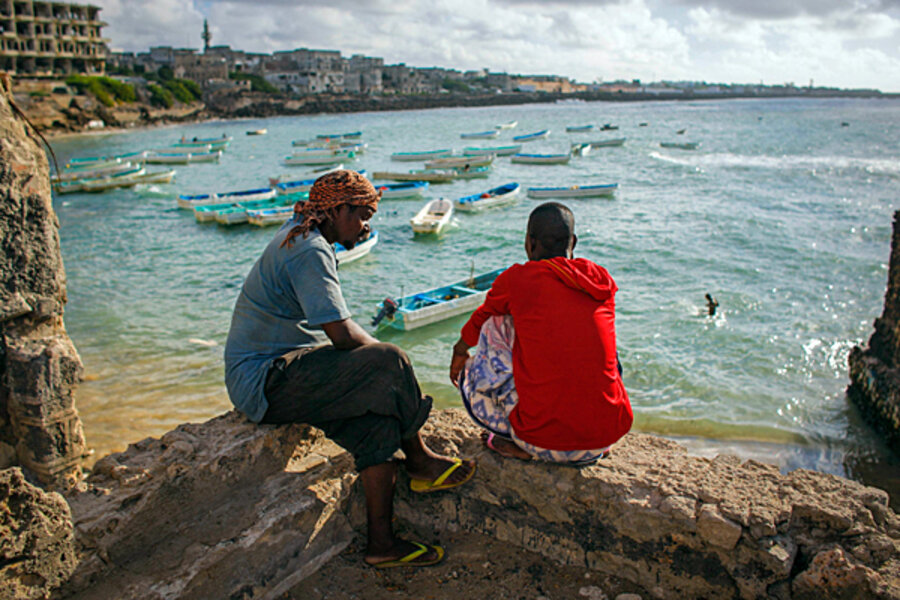Oh, the places you won't go! World's 25 least-visited countries
Loading...
For some travelers, getting off the beaten path is a point of pride, a way to see the parts of the world that don’t make it into glossy guidebooks.
But how many of those same adventurous travelers would be willing to visit, say, Somalia?
About 500, it turns out.
At least, that’s how many tourists found their way to the wartorn east African nation last year.
That makes Somalia the second-least visited country in the world, after the tiny pacific island nation Nauru, according to a recent list compiled by travel writer Gunnar Garfors from UN statistics.
Little Nauru – 8.1 square miles in size, population 9,378 – got just 200 visitors last year, and it’s pretty clear why.
“There is almost nothing to see there,” writes Mr. Garfors, “as most of the island … is a large open phosphate mine.”
Indeed, most of the world’s least visited countries seem to fall in one of two categories. There are the Naurus, where you’ll puzzle over what to do, and the Somalias, where it’s simply too dangerous to do much of anything at all. (As Somalia’s Wikitravel page aptly notes, “the easiest method for staying safe in Somalia is not to go in the first place.”)
Most of the “nothing to do” countries are the crumbs that dust a map of the Pacific Ocean: the Federated States of Micronesia, the Solomon Islands, Kiribati, and Tuvalu. The latter shares with the Maldives the dubious distinction of having "highest elevation points" that are the lowest on earth – 15 feet above sea level. Visit while you can, as rising sea levels could make the island uninhabitable within a century.
As for the “too dangerous” countries, the list reads like a global primer in political conflict. For instance, despite its pristine national parks full of wild gorillas and elephants, the perpetually ungovernable Central African Republic (#23) is an unpopular destination for tourists. And its stock will likely continue to plummet – last week a rebel alliance seized the capital, Bangui, and the president fled to neighboring Cameroon. (For more on the tempestuous politics of the CAR, read about the rebel alliance that took power there Sunday)
Afghanistan (#10) also suffers from tourism-deflating instability, which keeps visitors away from its rugged peaks, ancient Buddhist monuments, and Islamic holy sites, including the 12th-century Minaret of Jam, a UNESCO World Heritage Site.
“The Taliban have a message for foreign tourists who come to Afghanistan, especially if they are from any of the 50 countries that are part of the NATO-led coalition supporting the government: Big mistake,” writes The New York Times.
Other countries on the list, like Guinea Bissau (#14), Libya (#15), and East Timor (#18), have seen their reputations – and infrastructure – hobbled by recent wars or uprisings.
But not every country on the list is too dangerous or boring to visit. A few are simply effectively sealed off to the outside world.
All foreign visitors to North Korea (#16) are limited to a state-curated itinerary and must have an official government “minder” by their side at all times. But for the few Western tourists who venture into the country, that’s part of the appeal. “You will rarely get to see propaganda done more explicitly,” Garfors writes.
Except, perhaps, in Turkmenistan (#7), where visitors who brave the onerous Soviet-esque visa application process were, at least until 2010, rewarded with sites like a 50-ft. golden statue of former dictator Saparmurat Niyazov in the capital Ashgabat, which rotated throughout the course of the day to face the sun. But the country’s most indisputably impressive site is a massive flaming crater deep in the Karakum Desert. Measuring 230 feet across and almost 70 feet deep, the so-called “Door to Hell” has been burning continuously since Soviet scientists lit it on fire in 1971.
Obscure? Yes. But that's part of the charm.






